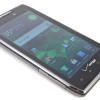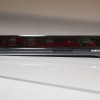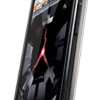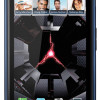Review: Motorola Droid RAZR for Verizon Wireless
Screen
The RAZR's display stretches diagonally across 4.3-inches of glass. It rates qHD resolution, which measures 540 x 960 pixels. It looks good, but not as good as I was expecting it to look. The pixel density should be high enough to make individual pixels invisible, but they aren't. If you look closely, you can see pixels here and there, along the edges of icons, text, and graphics. This is because the display uses PenTile technology. The display isn't as bright as I was hoping it would be, either. It is a Super AMOLED, but it doesn't come off as brilliant as comparable Super AMOLEDs from Samsung, for example. I also noticed a greenish tint on white web pages that should have been pure white.
Signal
The RAZR is a 4G/3G device, meaning it uses Verizon's CDMA EVDO 3G network when there's no 4G LTE coverage available.
As a 4G device, the RAZR performed pretty well. I didn't take the RAZR into New York City, but the one area in New Jersey in which I tested the RAZR, it gave me no trouble finding or connecting to Verizon's LTE network. Data speeds were a bit inconsistent, though. In several successive tests, I hit a maximum download of 6.14Mbps and a maximum upload of 1.47Mbps. I also saw speeds as low as 1.56Mbps down and 900Kbps (yes, with a "K") up. Browsing the internet felt speedy, though.
As a 3G device, the RAZR doesn't hold up so well against other Verizon devices. The signal indicator ranged wildly all over the place no matter where I tested the RAZR. (Signal remained consistent on other devices in the same locations.) In practical terms, voice and data performance in 3G coverage areas was OK, but not great. Browsing speeds were acceptable, but the RAZR dropped/missed a few calls.
Sound
The RAZR is a fine voice phone. Calls were crystal clear most of the time, with the sound quality degrading only under the worst signal conditions (i.e., one bar or less). The earpiece produces plenty of volume so that the RAZR can be heard above screaming kids, construction equipment, or zipping traffic. The speakerphone also sounds great, but it was a decibel or two quieter than I would like. It's loud, but short of loud enough. Ringers and alert tones can be set loud enough to make your entire office (or household) know when your phone is ringing. Ringtones are painfully loud at maximum volumes. The vibrate alert isn't jackhammer strong, but still manages to make sure you know the phone is ringing.
Battery
I tested the RAZR under LTE 4G coverage for only about 90 minutes. In that short time period, the battery dropped an eyebrow-raising 25% under heavy use. When under 3G coverage only, the RAZR's battery lasted at least a full day with both the Wi-Fi and Bluetooth radios on. As with all of the 4G LTE phones sold by Verizon, the trade-off for 4G speed is battery life. At least the RAZR offers a switch to turn the LTE radio off, allowing users to manage their power more effectively. Bottom line: the battery isn't going to last very long when using the LTE radio. Switching to 3G-only can help conserve power, but I'd make sure to have charging options or alternate power supplies handy if you use 4G all the time.


 Review: Motorola Droid RAZR MAXX for Verizon Wireless
Review: Motorola Droid RAZR MAXX for Verizon Wireless
 Hands On with the Motorola Droid RAZR and ACTV
Hands On with the Motorola Droid RAZR and ACTV
 Motorola and Verizon Announce the 7.1mm Thick Droid RAZR
Motorola and Verizon Announce the 7.1mm Thick Droid RAZR
 Blue Moto Droid RAZR Hitting Stores Starting Today
Blue Moto Droid RAZR Hitting Stores Starting Today
 Motorola Droid RAZR
Motorola Droid RAZR



